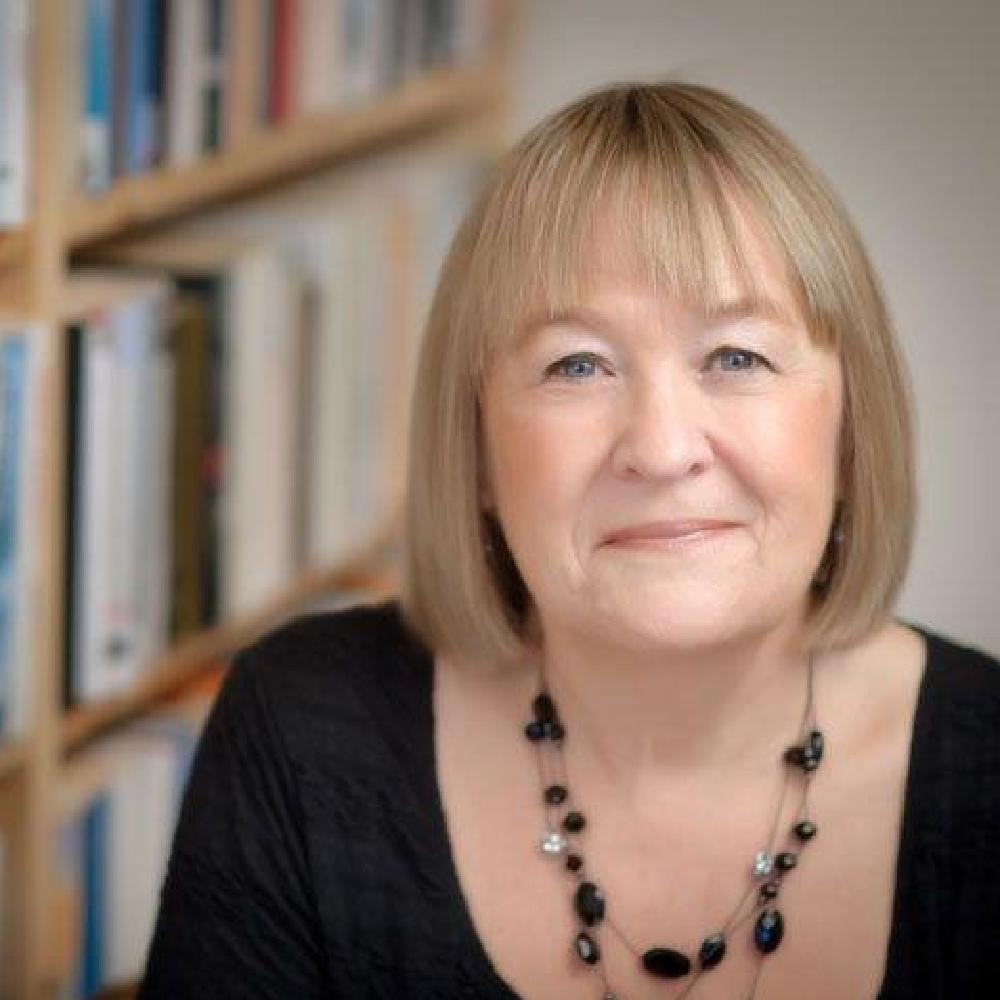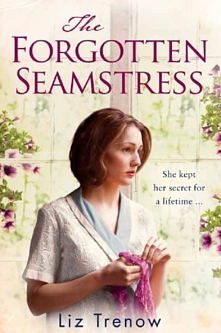
Liz Trenow

In The Forgotten Seamstress, two stories are told in parallel: In 1910 a young seamstress, Maria, is noticed by Queen Mary, patron of the London Needlework Guild, and employed in the royal household. In 2010 Caroline discovers that a patchwork quilt inherited from her grandmother contains unique royal silks. Through the fading memories of her mother, some family letters and photographs, some old cassette tapes and the help of a local journalist Caroline uncovers an extraordinary story involving a royal affair, a life of incarceration and two women whose lives collided with devastating consequences. Finally, she comes to understand what her Granny wanted her to know – the truth about herself and how she wants to live her own life.
You featured in The Perfect Treat, so how did you become involved in the project and what was your story about?
I became involved with The Perfect Treat through my commissioning editor at Harper Collins. I thought it was a great idea and was flattered to be published alongside established authors like Miranda Dickinson. Breaking the Spell is based on the folklore behind the familiar children’s story of Sleeping Beauty, but was really inspired by a television programme about the families of people who are supposedly in a ‘persistent vegetative state’. I was so touched by these real-life stories that I decided to write about a mother whose daughter is brain damaged in an accident and who develops an irrational belief that a Prince’s kiss could wake her up.
The Forgotten Seamstress has been compared to Victoria Hislop and Joanna Harris, so how does that make you feel?
Wow! I feel immensely flattered to have what is only my second novel compared to the writing of both of those highly experienced and best-selling novelists. I have been inspired by reading both of them in the past and, like them, enjoy writing multi-generational stories in real-life historical settings.
Tell us about your research process into the period in history.
First of all, I read everything and anything I can about the period – both fiction and non-fiction, as well as biographies. Finding out about what Maria’s life as a servant in Buckingham Palace was tricky. I visited the building of course, but you are only allowed into the royal reception rooms and are never shown ‘downstairs’. Downton Abbey was quite helpful! I read a number of accounts and histories of the Palace and of the royal family at that time, but couldn’t discover whether they had ever employed a seamstress.
The setting of the asylum was straightforward. As a teenager, I was an inpatient in a ward set aside for minor clinical operations at an enormous Victorian mental hospital close to my home town. The sights and sounds of the place left a deep impression on me. It was like a country mansion set in its own grounds but surrounded by high fences – outwardly grand and yet with such an oppressive and ominous atmosphere.
I owe a great debt to the sociologist and author Diana Gittins for her book, Madness in its Place (Routledge 1998). She includes first-hand accounts of staff and patients, which really brought the place and people to life and led me to one of those light-bulb moments: solving the problem of how to tell Maria’s story. I created a character – Professor Patsy Morton – who had undertaken a research project not unlike that of Diana Gittins’, although a couple of decades earlier. This was the perfect way of allowing Caroline – and the reader – to hear Maria’s story first hand. Although we never actually meet her in the book, the tapes help us to feel that we know her.
Where did your inspiration for the story come from?
When I went to the Warner Textile Archive in Braintree, Essex, doing research into my own family history, I chanced upon a case of the ‘May Silks’: beautiful damasks and brocades, some with interwoven gold and silver threads, hand woven by Warner and Sons for the trousseau of Princess May for her wedding to the heir to the British throne in 1893. The silks themselves were entrancing but it was the story behind them which most intrigued me, so I decided to make them the centrepiece of my novel.
What drew you towards writing a historical novel?
Reading fiction has taught me more about history than any school textbooks, and I hope that my books will do the same for some of my readers. My first novel, The Last Telegram, was set in the Second World War and based on events and characters in my own family history. While researching this I became fascinated by the way that historical events reverberate through succeeding generations, so my next two novels have this as a central theme. I love writing characters in historical settings and somehow I find it easier to find their ‘voice’ than when writing contemporary characters.
To what extent is having a central object, like the memory quilt, integral to a good story?
I’m not sure there has to be a single ‘object’, or even a single ‘theme’ to make a good story, but they can certainly help to bring a focus to a novel. In The Forgotten Seamstress I used the quilt as a plot device to hold and reveal the family mystery, and it serves as a metaphor for Maria’s long life.
I am no quilting expert but love writing about silk and other fabrics. As I was researching the novel, I was fortunate to be introduced to the internationally-acknowledged patchwork quilter, teacher and author Lynne Edwards, who in 2008 was awarded an MBE for her services to arts and crafts. We met several times and, over bottles of wine and lots of laughter, ‘devised’ the quilt that Maria made, taking into account the influences and sources of inspiration that she would have had at different times of her life, and the sort of fabrics she might have had at her disposal.
By the time we had finished I had, in my mind’s eye, a very clear view of what the quilt would look like. We very much hope that someone, someday, will be inspired by the pattern Lynne has very generously devised (available for free at www.liztrenow.org) and create ‘Maria’s quilt’. If you do, please let us know!
What is next for you?
I have already written the first draft of my next book, The Poppy Factory. It will be published in August 2014, marking the 100th anniversary of the start of the First World War. As the title suggests, the story revolves around the work of the real-life Poppy Factory which still employs disabled veterans making Remembrance Day poppies in Richmond, Surrey. Besides a poignant First World War strand it also has a powerful contemporary storyline based on interviews with two extraordinary young women who served as army medics on the front line in Afghanistan.
After this I hope to delve even further back into history and write a novel set among the silk weavers of Spitalfields in the 18th century.
Having been a journalist for much of my working career, and now finding myself a full time novelist, I cannot imagine a life that does not involve writing and reading.

